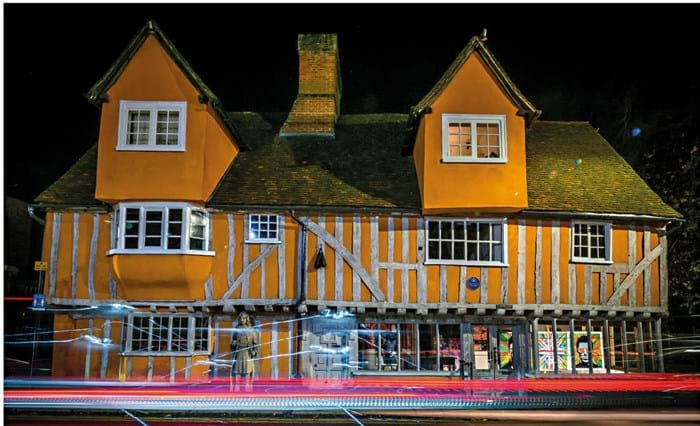ATG: You are an artist, but how did you get into restoration?
Ceri House: In my early days I had a young family and a mortgage to take care of. I knew I wouldn’t get by just selling my paintings so I did picture framing for a living. It was kind of a natural progression to go into carving and gilding. I wasn’t getting many commissions for new frames so I specialised in the restoration of gilded frames.
Who have you worked with/for when restoring? Have you done it alone or worked with other businesses?
My longest-running collaboration has been with Sir Peter Blake (b.1932). My father Gordon House (1932–2004) worked with Sir Peter on the iconic Sgt Pepper’s Lonely Hearts Club Band album for The Beatles. He did the graphic design and typography and Sir Peter did the ground-breaking collage which the band are standing in front of.
That was in 1967. I was four years old so Sir Peter and I go back a very long way. I do all his picture framing, restoration and make some of the installation pieces.
Another long-running association was with Sir Howard Hodgkin (1932-2017). He was an avid collector of 18th century antiquities which invariably needed a lot of attention. He had a good understanding of restoration techniques and could often teach me things. The joke was that I was the resident gilder and the house and studio were slowly turning into Versailles!
Do you think it is a difficult sector to get into in terms of training/jobs available?
I have been very lucky to have worked with two of the greatest artists of their time through my father’s association with them but I never had trouble finding work. At one time when things were quiet, I went into a mirror dealer in Camden Passage asking for work. He kept me well supplied with broken French mirrors for many years.
Do you think there is still the demand from customers to pay for the skill and craftsmanship of a restorer?
I always found that the first hurdle with a new client was educating them as to just what goes into gilding, as most of the work is unseen before you lay leaf on an object. To be honest. people mostly thought it was just touching in with gold paint where as most of the work was removing the gold paint and other bad restoration.
Do you think TV shows such as The Repair Shop have helped or hindered the restoration business?
I once had a client who said he wanted ‘brand new antiques’ – an awful phrase that seemed to be a complete contradiction in terms.
My approach to restoration is to preserve the antiquity of an object and where appropriate the story of its history. In the few episodes of The Repair Shop that I’ve seen the ‘repair work’ has been, in my opinion, at best unsympathetic.
Is there one item that you have restored/ rescued that you are most proud of?
About 10 years ago, Sir Howard purchased two 6ft high columns which were in a very bad state. They were in pieces, lots missing and one had lost around 12in from the bottom which had rotted away. Consolidation, replacing missing carving, gilding and toning new work to visually match the original went on for about 12 months.
The finished work stood in Sir Howard’s front room alongside all the other pieces in his amazing collection.
















